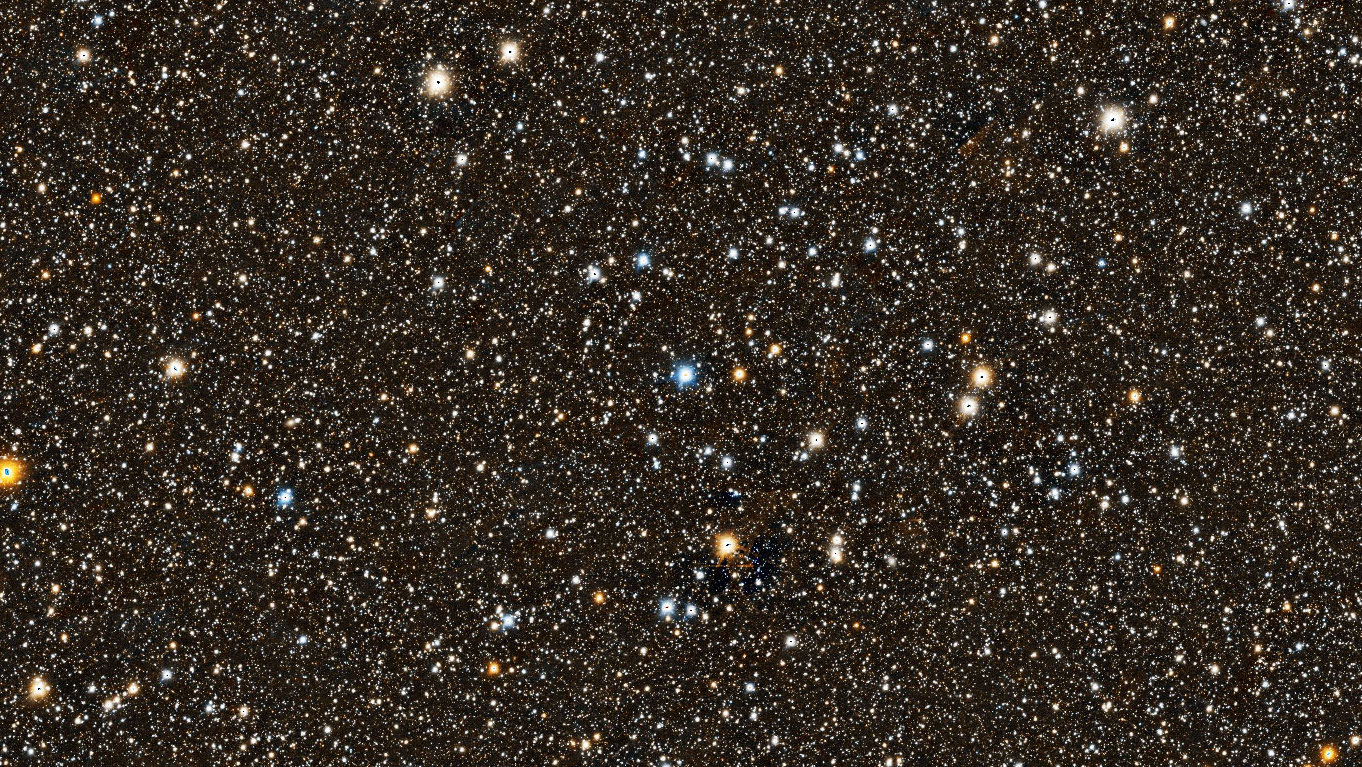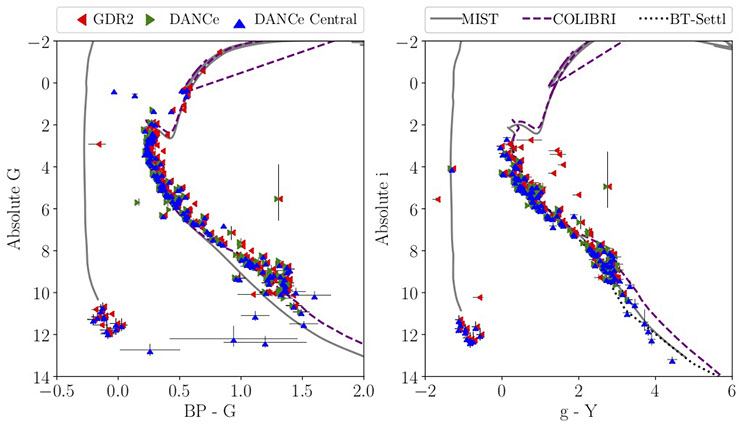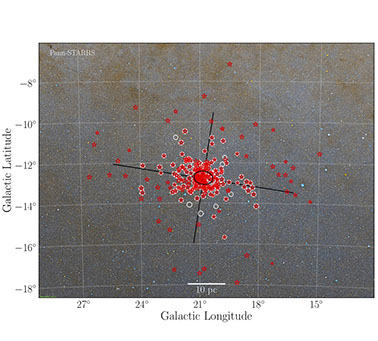
The open cluster Ruprecht 147, also known as NGC 6774, is the oldest of the nearby (<500pc) clusters: it is about 2.5 Gyr old and is located 307 pc away from the sun, in the direction of the Sagittarius constellation. Because of its age and proximity, Ruprecht 147 is an excellent system to study the evolution of open clusters and stars. In particular, to study the evolution of the mass distribution due to dynamical processes that lead to the dissolution of these stellar systems into the Galaxy. Furthermore, Ruprecht 147 hosts several interesting objects like eclipsing binaries, exoplanets and white and brown dwarfs.
By combining the exquisite Gaia astrometry with our deep and precise astrophotometric DANCe measurements we were able to analyse a region comprising a circular area of 6 degree radius with 16 million sources, and a central region with 10 million sources in which our photometry reaches 25 magnitudes in the SDSS u band. We analysed these immense data sets with our machine learning clustering algorithms and we were able to find 259 candidate members from which 58 were new.

The figure above shows two color-magnitude diagrams obtained with Gaia (left) and our data (right).
Amongst the properties of these members we found:- An extinction in Av of 0.36 mag
- Strong evidence of mass segregation, which means that the radial position of the star is correlated with its mass.
- High ellipticity of the cluster and alignment of its major axis with the Galactic plane.
- A plateau mass distribution with high and low mass cutoffs originating due to stellar and dynamical evolutions, respectively.
